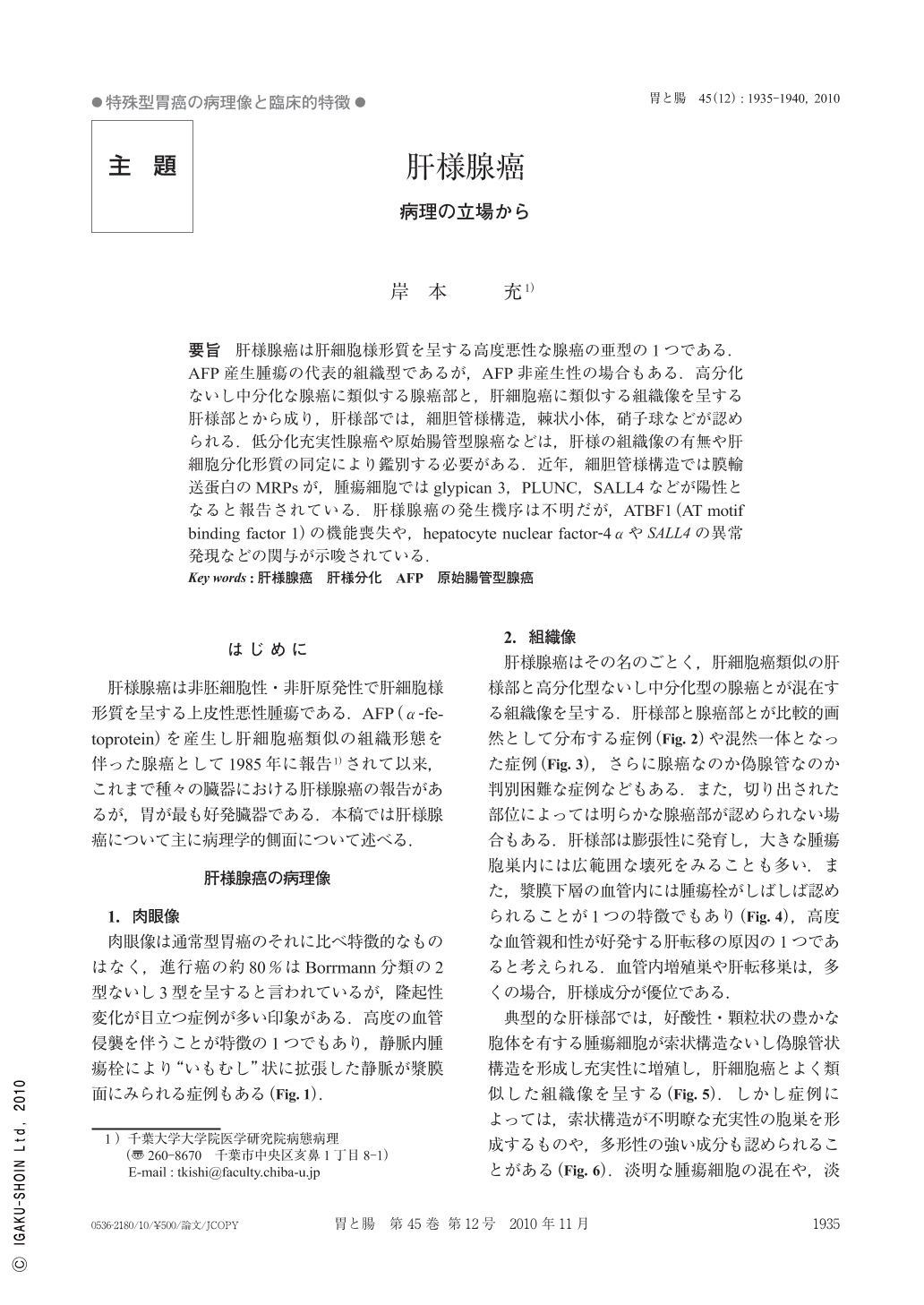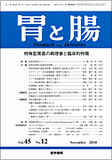Japanese
English
- 有料閲覧
- Abstract 文献概要
- 1ページ目 Look Inside
- 参考文献 Reference
要旨 肝様腺癌は肝細胞様形質を呈する高度悪性な腺癌の亜型の1つである.AFP産生腫瘍の代表的組織型であるが,AFP非産生性の場合もある.高分化ないし中分化な腺癌に類似する腺癌部と,肝細胞癌に類似する組織像を呈する肝様部とから成り,肝様部では,細胆管様構造,棘状小体,硝子球などが認められる.低分化充実性腺癌や原始腸管型腺癌などは,肝様の組織像の有無や肝細胞分化形質の同定により鑑別する必要がある.近年,細胆管様構造では膜輸送蛋白のMRPsが,腫瘍細胞ではglypican 3,PLUNC,SALL4などが陽性となると報告されている.肝様腺癌の発生機序は不明だが,ATBF1(AT motif binding factor 1)の機能喪失や,hepatocyte nuclear factor-4αやSALL4の異常発現などの関与が示唆されている.
Hepatoid adenocarcinoma is a highly malignant variant of adenocarcinoma that has hepatocellular phenotypes with or without AFP production. The histological feature of hepatoid adenocarcinomas typically consists of papillary and/or tubular adenocarcinomatous component and hepatoid component that is similar to hepatocellular carcinomas. In the hepatoid component, bile canalicular-like structures, spicular bodies, and hyaline globules are observed. Solid-type poorly differentiated adenocarcinomas and adenocarcinomas with enteroblastic differentiation are differentially diagnosed by the existence of hepatoid appearance and the evidence of hepatic differentiation. Recent studies have revealed that MRPs are expressed on the apical surface of bile canalicular structures, and that glypican 3, PLUNC, and SALL4 are expressed by tumor cells. It has been suggested that abnormalities of transcription factors, including reduction of AT motif binding factor 1 and up-regulation of hepatocyte nuclear factor-4α and induction of SALL4, are involved in mechanisms for emergence and/or aberrant hepatic differentiation of hepatoid adenocarcinomas.

Copyright © 2010, Igaku-Shoin Ltd. All rights reserved.


